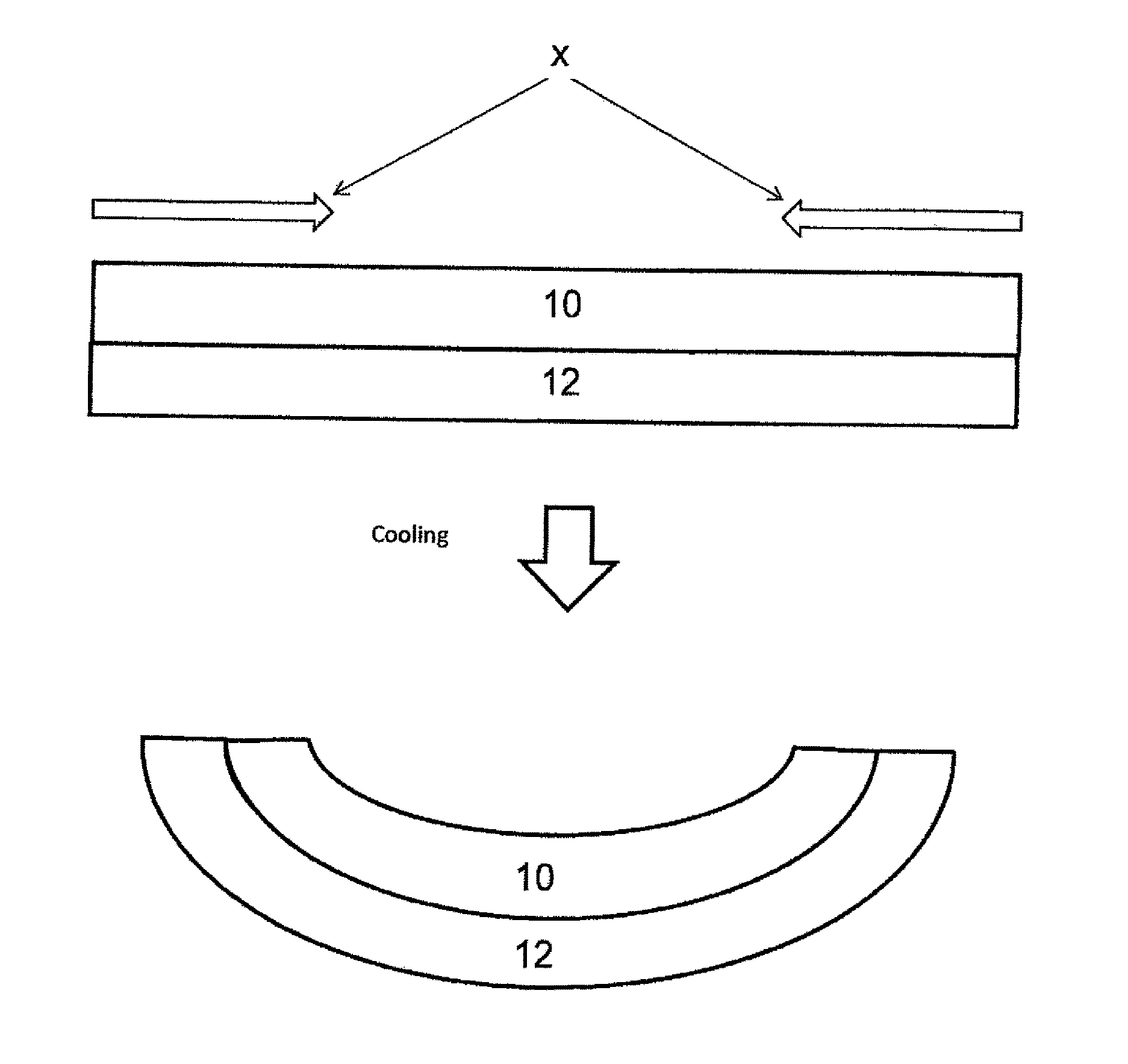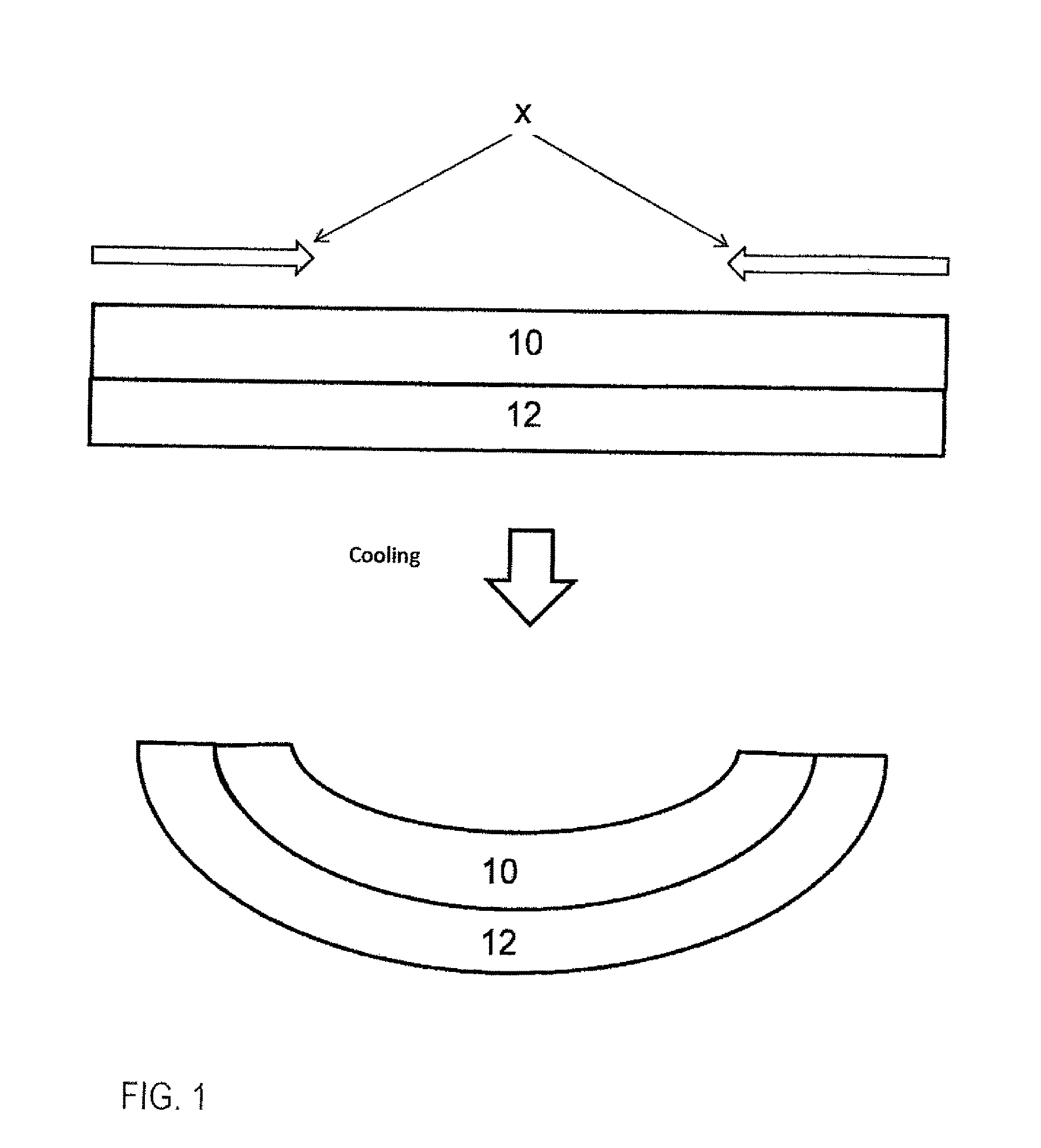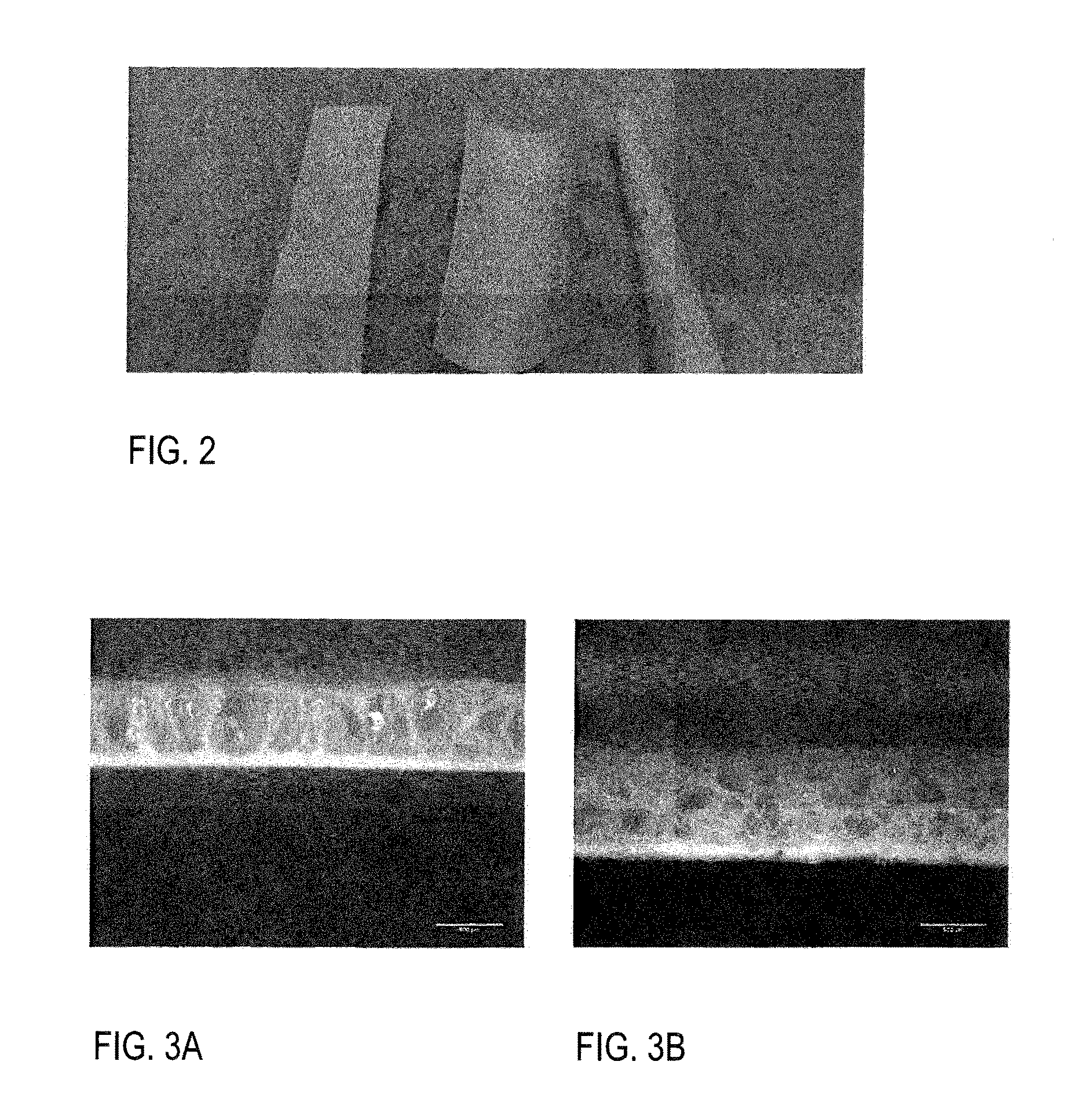Composite sheet and manufacturing method for a foamed decorative sheet free of PVC and plasticizers
- Summary
- Abstract
- Description
- Claims
- Application Information
AI Technical Summary
Benefits of technology
Problems solved by technology
Method used
Image
Examples
example 1
[0064]The foamable layer has been made of polyolefin material having an elastic modulus of <0.1 GPa. The components of the foamable layer were mixed at 140° C., 60 RPM. Then the foamable layer has been laminated on paper at 140° C.
[0065]More specifically the foamable layer consisted of:
Ethylene-octene copolymer, melt100 parts by weight flow index 5, modulus 0.011 GPaAzodicarbonamide5 parts by weightZnO1 parts by weight
[0066]The layer had a thickness of 0.15 mm and had good adhesion to the substrate. No curling occurred after cooling to room temperature.
example 2
[0075]The foamable layer consisted of:
Ethylene-octene copolymer, melt100 parts by weight flow index 5, modulus 0.011 GPaCalcium carbonate60 parts by weightActivated azodicarbonamide 5 parts by weightTitanium dioxide10 parts by weightDicumyl peroxide 1 parts by weight
[0076]The layer thickness was around 0.15 mm. In the next step, the layer was laminated to the base layer and cross-linked at 170° C. for 1 min. The layer was printed on a laboratory gravure printing machine with water based ink suitable for polyolefins surface and foamed in a convection oven at 1 min 205° C. FIGS. 3A and 3B show that the composite sheet including the foamable layer with <0.1 GPa (FIG. 3A) exhibited good foaming that is comparable to PVC based foams used for wall cover (FIG. 3B).
example 3
[0077]The foamable layer consisted of:
Ethylene-octene copolymer, melt100 parts by weight flow index 17, modulus 0.06 GPaLDPE, melt flow index 10, modulus10 parts by weight0.32 GPaCalcium carbonate60 parts by weightAzodicarbonamide 5 parts by weightZinc oxide 1 parts by weight
[0078]The layer with 0.2 mm thickness was laminated to 0.1 mm non-woven material and foamed in a convection oven at 1 min 215° C. Afterwards, it was hot-embossed at about 140° C. FIGS. 4A and 4B show that the embossing structure of the composite sheet including the foamable layer with <0.1 GPa (FIG. 4A) was comparable to PVC-composite sheets (FIG. 4B).
PUM
| Property | Measurement | Unit |
|---|---|---|
| Percent by mass | aaaaa | aaaaa |
| Percent by mass | aaaaa | aaaaa |
| Thickness | aaaaa | aaaaa |
Abstract
Description
Claims
Application Information
 Login to view more
Login to view more - R&D Engineer
- R&D Manager
- IP Professional
- Industry Leading Data Capabilities
- Powerful AI technology
- Patent DNA Extraction
Browse by: Latest US Patents, China's latest patents, Technical Efficacy Thesaurus, Application Domain, Technology Topic.
© 2024 PatSnap. All rights reserved.Legal|Privacy policy|Modern Slavery Act Transparency Statement|Sitemap



